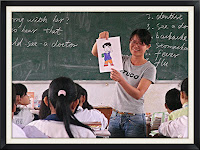Few things in life
are certain, but in the world of teaching there is one guarantee: observations.
Formal classroom observations can be daunting for everyone involved. You
may find yourself planning and re-planning for all the ‘what-if’ scenarios your
mind can drum up with all roads leading to confusion. It doesn’t have to be
this way! While you may be wondering why
we need our classroom to be observed, there are sure fire ways to have a stellar classroom observation true tips
for giving yourself your best chance for success.
 |
Tip
1: Have a clean beginning and ending
Something you want to be sure you demonstrate
to administration is clear concise sequences in lessons. The clean beginning
and ending is a major part of that. It doesn’t hurt that these activities serve
a dual purpose too! For a beginning, a set activity like a warmup or bell
ringer gives students the opportunity to jump start their focus. At the same time,
it gives you, the educator, time for administrative duties like collecting
homework and submitting attendance.
A great way to wrap up a lesson is with exit
tickets! It not only shows administration that you have a clear ending for
class, but afterwards you’ll be able to assess student learning needs to make
the necessary adjustments. If songs or mnemonic devices are more your speed,
this is also a great option which helps students retain information.
Tip
2: Have two to three student collaborations during class
Student collaboration is a great solution for
those awkward pauses during instruction. Using the think-pair-share format,
students are able to share ideas and work together to understand the material
better. When the time comes for sharing out, students are often more apt to
speak up. Without the pressure of having to share ideas they came up with
alone, they feel empowered to participate!
The sweet spot for classroom collaboration is
two to three times. This way, students still get the opportunity to
collaborate, but not enough to encourage too excessive chatter, you get off
topic or loss of your pacing.
Tip
3: Perform a classroom temperature check at least twice during the lesson
Temperature checks just means make sure all of
your students understand the material. Some teachers prefer to ask a question
to the whole class then call on a specific student that knows the answer to
show the class is learning. This works up to a point.
Usually, though, administration wants to know
that everyone in the class is
learning. What I like to do is have students use whiteboards. By posing a
question to the entire class, they can somewhat anonymously answer the question
by showing the answer only to you, the teacher. This really clears up any
confusion about who understands the material and who needs further
reinforcement. This method also assures that all students participate and be
honest about where they’re at with the material.
I highly recommend this method, but a word of
caution, don’t wait to use white boards for the first time on the day of your
observation. Make sure this method is a part of classroom culture beforehand!
You don’t want to wait until the day (or the week) of your formal classroom
observation to implement this.
Tip
4: Always give students an opportunity to work independently
Quiet, independent work is helpful in seeing
who is struggling and who may need remediation. A simple way to lead into
independent work is by surprisingly through classroom collaboration. Allow
students to work with a shoulder partner and depending on the group, they may
also be able to pick their team partner. Once partners are selected, have them
work with someone for a timed, five-minute period. After the five minutes is
up, students should return to their seats and work individually. This is good
for a few reasons.
Tip #5: Check in with Students
Individually
During this time, you can circulate, talk to
them, look at their work, ask clarifying questions and make sure they
understand. Many students absorb information better during collaboration, but
application comes during independent work, particularly with exit tickets.
These quick assessments allow students to process the information and allow you
to see what adjustments to make to your teaching.
Do you feel ready for the next time your administrator
comes by your room? Your students are going to benefit greatly from these
improvements. For more tips, follow me on social media. If you want to save
some time, check out
my formal observation form freebie!
If you are wondering what to expect from your
principal, click
here for a behind the scenes look. Or,
for more project-based learning in your class, check
out these tips from Edutopia.







